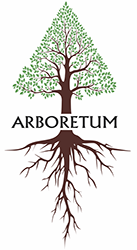Catalpa
Catalpa (Latin Catalpa) A beautifully-blooming decorative tree species widely used in urban landscaping.
Catalpa is a medium-sized tree (up to 16 meters tall), fast-growing, highly decorative, especially during flowering. In adulthood, Catalpa easily tolerates urban gas pollution, drought and interruptions in watering.
Catalpa (Latin Catalpa) A beautifully-blooming decorative tree species widely used in urban landscaping.
Catalpa is a medium-sized tree (up to 16 meters tall), fast-growing, highly decorative, especially during flowering. In adulthood, after 3-5 years of growth, Catalpa easily tolerates urban gas pollution, drought and interruptions in watering. The flowering of Catalpa is a delight and is not able to leave indifferent both people and insects. Its complex shape is large flowers (up to 2.5 cm), bloated-bell-shaped, white on the outside, purple on the inside, streaked with yellow spots and stripes; come in final brushes.
Catalpa is considered the honey plant of the second group. It is able to support the development of bee-families during the break between the flowering of Acacia and Linden. It blooms in the second half of June (at the latitude of Chisinau). Long flowering - more than 20 days. It is readily pollinated by both bees and a wide range of other pollinating insects: bumblebees, osmium, lonely carpenter bees ... There is no confirmed data on monofleur honey from Catalpa and its honey bearing.
Fruits collect seeds for ripening in pods half a meter long and the thickness of a finger. Catalpa pods continue to hang on the tree until next spring, opening in the winter and releasing small and light seeds that are carried by the wind.
The natural habitat of Catalpa is Asia - Japan, China, West India, but also North America, where it grows widely in the southern United States. The most common in Europe is Catalpa Syngaefolia. There are varieties with red leaves and different color colors: yellow, pink ... It happens that the trunk of the Catalpa twists, as can be seen on the oldest European specimens.
Catalpa is relatively easy to grow from seeds, following all the instructions in the routing. On our site you can buy seeds and seedlings of various types and forms of Catalpa, zoned in the Botanical Gardens of our region and in private collections.


